 A joint venture is a sort of a "partnership" between a developer and one or more passive investors to build a commercial property. The developer brings to the partnership the project; his expertise, as described in detail in his CV or curriculum vitae; and some prepaid expenses, such as architectural fees, engineering fees, and his down payment on the land. The investor brings to the "partnership" the majority of the equity required by the construction lender. I've used the term "partnership" throughout this article, but these business entities are almost always set up as limited liability companies ("LLC's").
A joint venture is a sort of a "partnership" between a developer and one or more passive investors to build a commercial property. The developer brings to the partnership the project; his expertise, as described in detail in his CV or curriculum vitae; and some prepaid expenses, such as architectural fees, engineering fees, and his down payment on the land. The investor brings to the "partnership" the majority of the equity required by the construction lender. I've used the term "partnership" throughout this article, but these business entities are almost always set up as limited liability companies ("LLC's").
Almost all commercial construction loans are made by banks. Banks today are not going to take all of the risk of a construction project by loaning to the developer 100% of the total cost of the project. Usually the bank will only cover part of the total cost of construction, and the developer will have to cover the rest. How much of the total cost of the project that the bank will cover is determined by their loan-to-cost ratio.

Example:
Doug Developer wants to build six town homes. The total cost of the project - including land costs, hard costs, soft costs, and the contingency reserve - is $2,500,000. This is a relatively small project, so his construction loan request will be small. He therefore wisely applies to a small bank located close to the subject property. (George's note: Doug did two smart things here. First he matched the size of the loan to the size of the bank to which he applied. Secondly, he applied to a bank with a branch located just down the street. Construction lenders greatly prefer local projects.)
Nearby Neighborhood Bank NT&SA has a bank policy that it will only make commercial construction loans today up to 70% loan-to-cost. Remember, the total cost of the project is $2.5 million. Seventy percent of $2.5 million is $1,750,000. This is the largest construction loan that Nearby Neighborhood Bank will make. Doug Developer will be expected to come up with the remaining $750,000.
Doug paid $500,000 for the land, and he put down $125,000. The seller carried back a short term first mortgage of $375,000. Doug also paid $65,000 for all of the architectural plans and another $22,000 for the engineering work. He therefore has $212,000 in equity into the project. He is short $538,000.
$750,000 required equity - $212,000 in developer contributions = $538,000 shortfall
Where is Doug going to come up with the missing $538,000 in cash?
Doug approaches Dr. Dan Deeppockets, a retired neurosurgeon, and invited Dr. Dan to enter into a joint venture with him. Doug Developer and Dr. Dan negotiate the following deal:
Dr. Dan will contribute the needed $538,000 in additional equity. If the project is successful and the condo's are sold off, Dr. Dan first gets his $538,000 investment back. Then, if there is any money left over, Doug Developer gets back his $212,000 cash contribution. If there any money left over, Dr. Dan gets a preferred return (before Doug Developer) of 15%. If there is still any money left over, Doug Developer earns a 15% return on his $212,000 cash contribution to the project. Any money left over? Dr. Dan and Doug developer agree to split any remaining profit 50-50. This repayment schedule is known as a waterfall.
End of example.

Who can qualify for a joint venture? In order to qualify for a joint venture, a developer needs one heck of a curriculum vitae (construction experience resume). After all, the developer is saying, "With my brains and your money, we are going to make a fortune together." I don't know about you, but if I were the guy putting up the dough, that developer's brain would have to be pretty darned impressive.
In real life, almost no one ever qualifies for an institutional joint venture - a JV with some huge fund. If you are an average commercial mortgage broker, I strongly urge you never to work on a joint venture. You'll never get paid. Personally I have come to the conclusion that the only developers who can convince a life insurance company, a REIT, or some wealth fund to JV with them are developers who are rich enough to build the project for cash using their own dough. You and I, as commercial mortgage brokers, will never get to represent one of these guys. Helloooo? You will never get paid. The guys we as brokers get are the developers who spend their last dimes on the architectural and engineering fees.
But what about private joint ventures - joint ventures with wealthy private investors? Many years ago, scores of broker-dealers raised money for development deals. Then the rolling commercial real estate depression hit in the early 1990's, and all of these broker-dealers were sued into oblivion. For 25 years developers found it extremely difficult to raise equity dollars from private investors.
Then something changed. During the Great Recession, President Obama signed the JOBS Act, which now allows real estate developers and entrepreneurs to publicly advertise to accredited investors for investments, just like hedge funds have been allowed to do for decades. This is huge.
Thirty years ago the syndication business was enormous, far larger than the hard money business nationwide. The syndication industry is not back yet, but I predict that it will return over the next five to seven years. My own hard money commercial mortgage company, Blackburne & Sons, is looking at a relatively tiny ($1.8 million) joint venture in California. In fact, we just issued a Letter of Interest. Risky-risky-risky, but I remain very bullish (after 20 years of being a perma-bear) on the future of the U.S. economy.







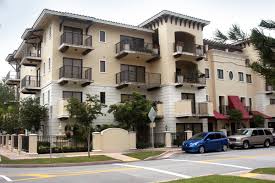 A
A 



 Today's article is far more important than a mere training lesson about some archane financial ratio. The gold-to-silver ratio actually explains much of the history of the modern world. Prepare to learn a ton.
Today's article is far more important than a mere training lesson about some archane financial ratio. The gold-to-silver ratio actually explains much of the history of the modern world. Prepare to learn a ton.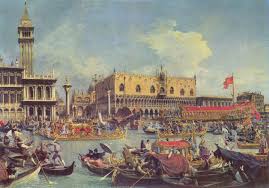
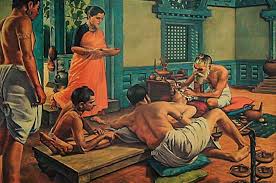 Why was silver so relatively precious in India and China? Why was gold valued so relatively little? The average person in India and China in the old days was dirt poor. There was no way on Earth that the average person in India would ever be able to save up enough wealth to own a gold coin or to ever conduct a trade in gold. Silver was the currency of the people, and the demand for it in India and China was immense.
Why was silver so relatively precious in India and China? Why was gold valued so relatively little? The average person in India and China in the old days was dirt poor. There was no way on Earth that the average person in India would ever be able to save up enough wealth to own a gold coin or to ever conduct a trade in gold. Silver was the currency of the people, and the demand for it in India and China was immense. 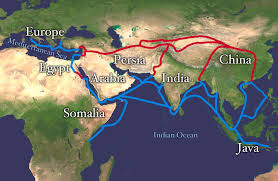

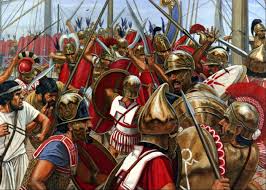 Later the Phoenicians (Lebannon) and the Carthaginians (North Africa), who were famous sailors and sea trading nations, controlled the Mediterranean Sea. The Carthaginian traders made an enormous profit carrying the East-West trade, with which they could build fighting ships and hire huge land armies.
Later the Phoenicians (Lebannon) and the Carthaginians (North Africa), who were famous sailors and sea trading nations, controlled the Mediterranean Sea. The Carthaginian traders made an enormous profit carrying the East-West trade, with which they could build fighting ships and hire huge land armies. But then Rome got smart. Rome built a fleet of its own and destroyed the fleet of Carthage. By doing so, Rome claimed lordship of the seas and the East-West trade.
But then Rome got smart. Rome built a fleet of its own and destroyed the fleet of Carthage. By doing so, Rome claimed lordship of the seas and the East-West trade. But the Venetians were envious. They too were a sea faring power, and they coveted the East-West trade. When the knights and soldiers of Fourth Crusade (booty seekers, in reality) needed transport to the Holy Land, only Venice possessed a sufficiently large fleet. "We'll transport your army to the Holy Land, if you do us a little favor. There is an irritating little city (little?) along the way that we would like for you to sack. They have lots of booty inside." So the Christian crusaders stormed the Christian city of Constantinople and slew all of the inhabitants. Now unbelievably rich with booty, the noble crusaders decided not to bother with the Holy Land, and they went home. In the process, little Venice became the uncontested master of the Mediterranean Sea and the financial capital of the world.
But the Venetians were envious. They too were a sea faring power, and they coveted the East-West trade. When the knights and soldiers of Fourth Crusade (booty seekers, in reality) needed transport to the Holy Land, only Venice possessed a sufficiently large fleet. "We'll transport your army to the Holy Land, if you do us a little favor. There is an irritating little city (little?) along the way that we would like for you to sack. They have lots of booty inside." So the Christian crusaders stormed the Christian city of Constantinople and slew all of the inhabitants. Now unbelievably rich with booty, the noble crusaders decided not to bother with the Holy Land, and they went home. In the process, little Venice became the uncontested master of the Mediterranean Sea and the financial capital of the world. What goes around, comes around. For hundreds of years, the Byzantines had protected Venice (the ungrateful bums) and the rest of Europe from the Ottoman Turks. While Constantinople eventually recovered from the sack by the Crusaders and repopulated, it was never able to regain its former strength. In 1453 Constantinople fell for a second and final time to the Ottomans, and Venice would spend the next 200+ years fighting the Ottomans for control of the Mediterranean all by themselves. When the Venetians were devastated by two plagues, the Ottoman Turks destroyed the last of Venetian fleets and took over control of the Mediterranean Sea, along with the gold-silver trade. This control of the East-West trade was a high-water mark in Muslim history.
What goes around, comes around. For hundreds of years, the Byzantines had protected Venice (the ungrateful bums) and the rest of Europe from the Ottoman Turks. While Constantinople eventually recovered from the sack by the Crusaders and repopulated, it was never able to regain its former strength. In 1453 Constantinople fell for a second and final time to the Ottomans, and Venice would spend the next 200+ years fighting the Ottomans for control of the Mediterranean all by themselves. When the Venetians were devastated by two plagues, the Ottoman Turks destroyed the last of Venetian fleets and took over control of the Mediterranean Sea, along with the gold-silver trade. This control of the East-West trade was a high-water mark in Muslim history. But it was the Dutch who had the foresight to build trading colonies along the west coast of Africa, and they founded Johannesburg in South Africa. Soon the Dutch controlled the Indian Ocean and the East-West trade. Amsterdam in tiny little Holland became the financial capital of the world. If you wanted to take a company public or if you wanted to borrow a huge sum of money - perhaps to fight a war - your most likely first stop was a Dutch bank.
But it was the Dutch who had the foresight to build trading colonies along the west coast of Africa, and they founded Johannesburg in South Africa. Soon the Dutch controlled the Indian Ocean and the East-West trade. Amsterdam in tiny little Holland became the financial capital of the world. If you wanted to take a company public or if you wanted to borrow a huge sum of money - perhaps to fight a war - your most likely first stop was a Dutch bank. Eventually, however, the British Navy was able to wear down the Dutch Navy and gain control of the seas and the East-West trade - one time by sailing into Holland's chief harbor and sinking the entire Dutch fleet before war had even been declared. The huge profits of the gold-silver trade moved to London, and London became the financial capital of the world until the end of World War I. London's investments banks (they were called
Eventually, however, the British Navy was able to wear down the Dutch Navy and gain control of the seas and the East-West trade - one time by sailing into Holland's chief harbor and sinking the entire Dutch fleet before war had even been declared. The huge profits of the gold-silver trade moved to London, and London became the financial capital of the world until the end of World War I. London's investments banks (they were called 


 You're an English ship captain in London, and the year is 1772. You have made seven successful trading voyages to India, and when you successfully brought your return cargo home to London, you made your financial backers absolutely stinking rich. They put up 2,000 pounds to finance your voyage, and they sold your return cargo of silks, spices, and gold for 37,000 pounds.
You're an English ship captain in London, and the year is 1772. You have made seven successful trading voyages to India, and when you successfully brought your return cargo home to London, you made your financial backers absolutely stinking rich. They put up 2,000 pounds to finance your voyage, and they sold your return cargo of silks, spices, and gold for 37,000 pounds.



 A few years ago, Alicia, who was running C-Loans at the time, called up a guy named Alan Dunn and said, "Alan, I'm about to make your whole day. Do you remember that hyperlink entitled
A few years ago, Alicia, who was running C-Loans at the time, called up a guy named Alan Dunn and said, "Alan, I'm about to make your whole day. Do you remember that hyperlink entitled  Thirty-five years ago, when I first founded
Thirty-five years ago, when I first founded  A
A 

 You are going to love me after this training article. It's the best one I have ever written, and whether you are a developer or a commercial loan broker, this training is going to make you a ton of money.
You are going to love me after this training article. It's the best one I have ever written, and whether you are a developer or a commercial loan broker, this training is going to make you a ton of money.



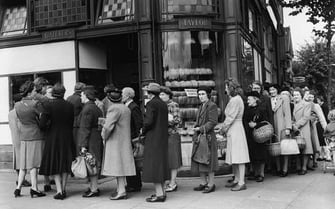 So many borrowers are going to need a commercial loan over the next two years to refinance a balloon payment that at some point bankers and conduit commercial loan officers may refuse to accept new loan applications. It won't be the first time in history.
So many borrowers are going to need a commercial loan over the next two years to refinance a balloon payment that at some point bankers and conduit commercial loan officers may refuse to accept new loan applications. It won't be the first time in history.


